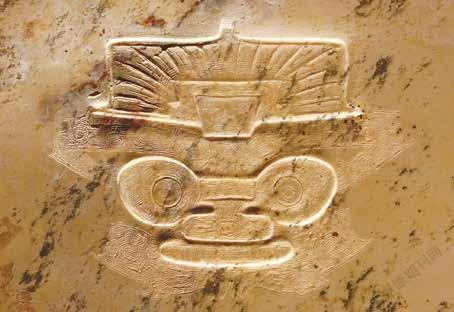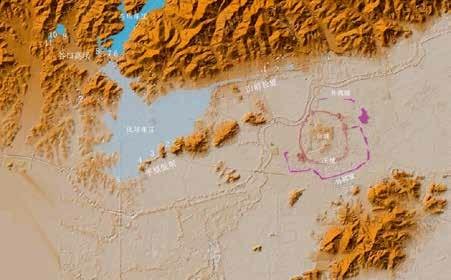Liangzhu:A Model for Large-Scale Archaeological Sites
2022-08-23byGongHaiying
by Gong Haiying

The Archaeological Ruins of Liangzhu City (about 3300-2300 B.C.) in Hangzhou, capital of eastern Chinas Zhejiang Province, were inscribed on the UNESCO World Heritage List during the 43rd session of the World Heritage Committee on July 6, 2019. The inclusion marked international recognition of Chinas five thousand years of civilization and its authenticity and integrity.
The World Heritage Committee said that the archaeological ruins of Liangzhu show an early regional state supported economically by rice-cultivating agriculture five millennia ago, making it an outstanding example of early urban civilization.
Testament to Five Millennia of Chinese Civilization
Named after the town where they were discovered, the Liangzhu ruins were first brought to light in 1936 when Shi Xingeng(1911-1939), one of the first generation of Chinese archaeologists, discovered some Neolithic black pottery pieces in Liangzhu Town in Hangzhous Yuhang District. Over the following eight decades, four generations of archaeologists have been excavating and researching the Liangzhu ruins, piecing together a huge capital city site from remains of jade artifacts, grand palaces, residences, and complex water conservancy systems. Spanning over 100 square kilometers, the site was finally presented to the world as a testimony for previous speculation that Chinese civilization started more than 5,000 years ago.
Between 2006 and 2007, Liu Bin, an archaeologist and then director of the Zhejiang Provincial Institute of Cultural Relics and Archaeology, worked with a team to find the four city walls enclosing the Liangzhu ruins, thus confirming the shape of the ancient city, approximately 1,900 meters from north to south and 1,700 meters from east to west. The sensational archaeological discovery connected more than 300 sites unearthed successively by four generations of archaeologists.“We can confidently say that what resulted in the Liangzhu ruins was a mature civilization,” said Liu.
On the periphery of the ancient city was a large reservoir covering about 14 square kilometers created by 11 dams, which were connected to the ancient city by a five-kilometer-long embankment. This water conservancy project, with functions integrating flood control, transportation, drinking and irrigation, showcased unparalleled scientific and technological achievements of the era and offered an important perspective for understanding the management mechanism and social complexity of the ancient civilization.
Liu stressed that considering its developed rice cultivation and advanced jade ware production, the Liangzhu civilization was not inferior to the ancient Egyptian, Sumerian and Harappan civilizations. It showed that Chinese civilization started at least 5,000 years ago, 1,000 years earlier than previously thought, according to Colin Renfrew, a retired professor of archaeology at the University of Cambridge and a fellow of the British Academy, who visited Liangzhu three times. Vernon L. Scarborough, professor at the University of Cincinnati in the United States, said that archaeological findings at Liangzhu have not only rewritten Chinas history but also world history.
Archaeological Excavation and Heritage Protection
Liu believes that many of the breakthroughs made during excavation and research of the Liangzhu site can be credited to the establishment of the Liangzhu mode for large-scale archaeological sites and its methods for balancing archaeological excavation and heritage protection. He added that the Liangzhu mode inspired Chinese archaeologists to expand the research area from the original ancient city to the surrounding 100 square kilometers. Moreover, thorough surveys of resources such as stone, jade, forests, water, and soil, as well as archaeological remains and natural environments, were conducted within the 1,000-square-kilometer zone surrounding the ancient city.
“When excavating the Fanshan site of the Liangzhu ruins in 1986, we could tell the bottom was far away, so we asked the local government to protect it,” Liu recounted.“This is how every important site was protected. Without government protection, the site of the ancient city might have been covered with modern buildings and you would not see the complete site as it is today.”
In 2009, a forum on conservation of large-scale archaeological sites held in Liangzhu passed the Liangzhu Consensus which envisioned building a park around the archaeological site. In 2017, Liangzhu National Archaeological Site Park was established along with an archaeology and protection center and a monitoring center.
Since the Archaeological Ruins of Liangzhu City were added to the UNESCO World Heritage List, the archaeological focus of Liangzhu has shifted to smallarea and refined excavation. At the same time, large-scale and coordinated protection of the World Heritage site in accordance with international standards was put onto the agenda. Under the model, a platform was launched in 2018 to apply big data technology in the monitoring, protection, and management of the Liangzhu site.
